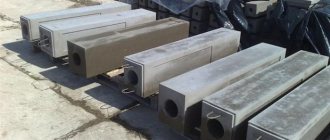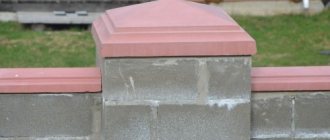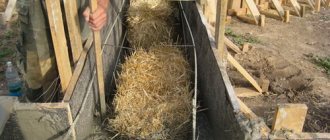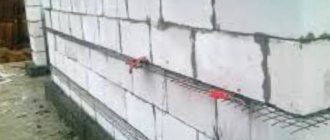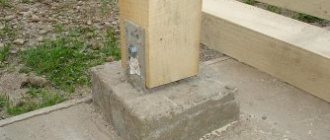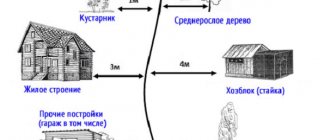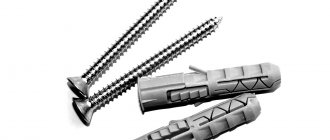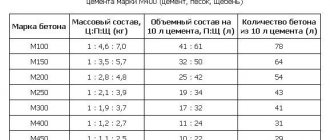. We are engaged in the installation of fences, gates (including automatic ones), installation of poles and power lines throughout Moscow and the Moscow region. Call from 09:00 to 21:00 daily.
When buying a country house, sooner or later you have to deal with the installation of electricity. To do this, it is necessary to install supports in the immediate vicinity of the site. But not everyone can install an electric pole on their site on their own, since connecting to the electrical network requires certain skills. Therefore, it is best to turn to professionals.
Planning
At the first stage of installation, the construction plan is determined and the type of supports is selected. The plan describes how to properly install an electric pole. The choice of material for pillars depends on their location and purpose. It must be durable, resistant to temperature changes, meet fire safety requirements and easy to operate. Installation of poles is possible from three types of materials: metal, wood or reinforced concrete.
Metal supports are installed mainly for laying high-voltage lines, as they are heavy, but lighter than reinforced concrete supports. They are made of special grades of steel and assembled from individual elements using bolts or welding. To avoid corrosion or oxidation, metal poles are painted with special paints or galvanized. The service life of such supports is more than 50 years.
Wooden poles are indispensable for installation in holiday villages or rural areas.
Wooden pole for electricity
Their main advantage is their low cost. For their manufacture, pine logs or larch are chosen. Also, such supports are widespread due to the excellent mechanical and insulating properties of wood. Wooden poles can be installed even during ice or strong winds, since they work well in bending and compression. In addition, wood practically does not burn, thanks to modern impregnations.
Wooden supports can last up to 45 years.
The cost of installing reinforced concrete poles is much higher than wood poles. But they are most popular due to their strength and durability. In addition, reinforced concrete is resistant to corrosion and harmful environmental influences.
The service life of reinforced concrete pillars exceeds 50 years, so it is advisable to use them in stressful urban conditions.
Having decided on the type of pillar, you can proceed to further actions.
Choice
If it is necessary to install an electric pole on a site, the choice comes down to only two options:
- Tree.
- Concrete.
This is because a metal structure will take up a lot of space and is expensive.
At the dacha, the best option is to install a wooden stand, taking into account all the advantages:
- To connect and repair, you do not need a car lift; the electrician rises and descends with his claws.
- Sufficient strength.
- Possibility of loading, unloading and installation manually.
- Possibility to increase durability by impregnation.
- Easy to recycle.
- Durability with impregnation up to 40 years.
- Cheap purchase and installation.
Scheme for a dacha and a private house
Soil preparation
Before installing a pole for electricity, it is necessary to mark the area and prepare the soil. The preparation process begins with cleansing the selected area. To do this, the turf is cut and the roots are removed using a sharp bayonet shovel.
Next, the hole is drilled. Depending on the characteristics of the soil, you can use special equipment, or you can use a garden auger.
Drilling a hole
Drilling should be carried out as deep as possible, and it is advisable to immediately transport the soil removed from the hole by wheelbarrow to a previously prepared place.
Important! The depth of the hole should not be less than the depth of soil freezing.
At the next stage, an anchor extension is made at the bottom of the pit. This is necessary so that in frosty weather the pole remains in place and is not pushed out.
Prices for installation and delivery of turnkey reinforced concrete supports SV-95 and SV-110.
To connect a house from a power line support, the so-called SIP is increasingly being used. The abbreviation stands for - self-supporting insulated wire. SIP cores are made of aluminum. In Soviet times, entry into the house was most often carried out with bare wires on insulators mounted on the pediment. After which the cable was connected from them to the meter.
Modern installation of SIP cable from pole to house is free of these problems. SIP insulation consists of cross-linked polyethylene, which is not susceptible to atmospheric influences. Sudden temperature changes also do not affect its insulating properties. Thanks to high-quality insulation, short circuits during overlaps are excluded. Such an input can faithfully last up to 25 years!
Material
The brands of materials from the manufacturer ENSTO are indicated here; in your case, the specification (SLIP, SO, SOT, etc.) may not be the same, but the names themselves (piercing clamp, anchor clamp, clamp) should be the same.
Before starting work, it will be necessary to take certain measurements. The distance from the support to the facade of the house where the wall hook will be located should be no more than 25 m. Otherwise, you will have to install an additional support support.
Choose SIP depending on what input you will be installing into the house - 220V or 380V. When purchasing SIP, it is better to make some reserve in footage for all sorts of unforeseen situations. Basically, the 4*16 SIP brand is used for entering the house.
Tingle clamps will be required to connect to the main power line. Their choice is very large, there are even some that can be used without removing the voltage from the power lines. The shear head of the bolt is isolated from the contacts. First of all, pay attention to the cross-section of the wire and select the brand of clamp for it.
It is important to make one note.
clamp for connecting to bare wires
Two hooks are installed on the support and facade of the house. It is between them that the SIP is stretched. Its fixation is carried out with anchor tension clamps.
If the owners of a private house need to enter an electrical line, they usually have many questions regarding the type of wire, as well as installation methods. For such work, SIP cables are often used. The article will briefly outline its advantages, the sequence of actions during its installation and the mechanics of installing it in the living space itself.
First of all, for owners who want to do the electrical installation themselves, they should understand what a SIP is. SIP is a self-supporting insulated wire. Now its cores are made of aluminum. Previously, wires for laying overhead power lines did not have external insulation, since at that time there was no material available that could be exposed to the open air for a long time and withstand tension.
Therefore, bare aluminum cables without external insulation were used. This approach could not ensure the safety of the overhead line. During frosts, the cores themselves became icy, moisture entered, the metal was subjected to oxidation and corrosion, and in strong winds there was a possibility of breaks and a pair of main wires intertwining with each other.
The solution to such problems was SIP. The SIP design made it possible to eliminate most of the dangerous consequences for the electric line in any area, since the insulation made of cross-linked compressed polyethylene provided reliable protection from external factors. SIP insulation is resistant to water, excess tension, and can also withstand high temperature changes.
The use of this type of wire allowed for a reduction in floor space, as the exposed electrical lines needed a large space to prevent them from touching each other. When bare conductors came into contact, a short circuit could occur, and the resulting fault could knock out power to a large number of homes.
We suggest you read: Is it possible to donate a plot of land without a house?
| Brand | Price for 1 piece. | Delivery from 1 to 25 pcs. | Installation |
| SV 95-2 | 5000 rub. | from 8000 rub. | from 12,000 rub. |
| SV 95-3 | 5800 rub. | from 8000 rub. | from 12,000 rub. |
| SV 110 | 6500 rub. | from 8000 rub. | from 12,000 rub. |
| Wooden post | 6000 rub. | from 8000 rub. | from 12,000 rub. |
Installation of pillars
Pillars are installed in the prepared pits using specialized equipment.
Important! We must not forget about accurate measurements during installation so that the pole stands strictly vertically.
Once you have succeeded in installing the electric pole, you need to securely fasten the support in its place. This is possible by concreting the support.
But it is recommended to pour concrete into a hole isolated from groundwater. To do this, a structure is made from roofing felt in the form of a tube, onto the end of which you need to put a plastic bag. The tube is lowered into the hole, and concrete is poured there.
During pouring, the concrete solution will press the tube against the walls of the pit, and the water accumulated at the bottom will be squeezed up. The plastic bag of the structure will protect the concrete from water penetration.
Installation of wiring in the house
Making a branch from the power transmission line to the intermediate support can be done in several ways:
- bare aluminum wire;
- copper or aluminum cable;
- self-supporting insulated wire (SIP).
In the first option, a traverse with insulators on which the wires are attached is installed on an electric pole. If the section from the intermediate support to the direct entry into the house is also made with bare wire, a cross-arm with insulators must also be installed on the house. Also, in the area between the pole and the house, a cable can be used, which is installed underground or over the air using a steel cable.
We invite you to familiarize yourself with Gerberas: how to grow a tropical flower at home. Description, varieties, care, reproduction, possible diseases (50 Photos & Videos) Reviews
Electrical network installation
To install electrical wires on poles, it is necessary to install traverses. They are used to fasten wires, but they are not conductors.
Installation of traverse
The crossbars are coated with an anti-corrosion coating, and fixing clamps with pins for insulators are attached to them. To protect from rain or snow, an additional cover is sometimes installed on the traverses.
The installation of power poles ends with tensioning the wires and attaching them to power line supports.
Each stage must be performed in accordance with the Electrical Installation Rules (ELR). The successful operation of the entire line depends on the correct installation of supports.
Regulatory Requirements
- When hanging any unprotected wires on supports, the distance from them to windows or balconies at maximum deviation should not be less than 1.5 meters.
- Above the carriageway, the wires are hung at a height of at least 6 meters, above the impassable part - at least 3.5 m.
We invite you to familiarize yourself with Dragee Eleutherococcus P: instructions for use, reviews
Height of wires above the roadway and pedestrian paths
- The distance between the wires when spanning up to six meters must be at least 10 cm, when spanning over 6 meters - at least 15 cm.
- Entry into the building is carried out at a height of at least 2.75 m; in this case, an insulating pipe is used for entry, the shape of which prevents water from entering the house.
- The structures on which the conductors are installed are made of fireproof materials and must have a fire resistance rating of at least a quarter of an hour.
Rules for electrical installations ch. 2.4. Overhead power lines with voltages up to 1 kV establish general standards:
- racks should not impede access to buildings and yards for people and vehicles. They must be protected from possible collisions with cars and machinery;
- at a height of 2 meters, every 250 meters, a serial number and posters are installed indicating the distance to underground utilities. Posters are also installed with the dimensions of the security zone, which reflects the owner of the power line and his contact information;
- laying overhead lines in the forest does not require deforestation. But the rules establish that the distance from SIP wires to trees should be from 0.3 meters, and for uninsulated ones - at least 1 meter;
- protection against corrosion of structural elements must be ensured.
Installation standards
be careful
It is worth cautioning against installing poles on your own property.
Firstly, the absence of such special equipment as a hole drill or a manipulator makes this process literally physically impossible manually, because the supports weigh more than tens of kilograms.
Secondly, without experience it is easy to make a mistake about their location. A strong gust of wind with a non-vertical installation of the pole and unsuitable soil promises big problems, including not only damage to property, but also a threat to human health.
Thirdly, the use of damaged supports or low-quality material to strengthen them can lead to rapid breakdown and even loss of power to the object.
Thus, the cost of installing one pole by our company is 25,000 rubles, which is completely justified and in many cases will not be higher than independent work. At the same time, you will receive all the necessary documents, as well as a guarantee that the supports are installed with high quality and will serve you for decades.
Power line security zone and the law
Magnetic waves emitted by power poles have a negative impact on people living near high-voltage structures. According to research, serious problems affect all organs. Based on this, experts have established the permissible distance at which residential buildings are allowed to be built.
In the city
If the site that is included in the security zone is owned by a private person, then a burden is imposed on the construction of buildings that provide for a long-term presence of people. Therefore, before you buy a plot to build a house near power lines, you need to inquire about a possible ban. The scope of the zone is determined by the organization of the electrical network.
Established standards for construction near power lines
The rules prohibit the installation of overhead power lines near open and crowded areas (sports grounds, swimming pools), over kindergartens and schools.
It is strictly prohibited to extend wires from poles over residential buildings. The site prepared for the construction of a country house or residential building must be located at a safe distance from power lines.
Sanitary protection zone
The distance between the pillars should be uniform. The height from the ground to the electrical cable should be:
- 3 meters between wires and rocky hill;
- 5 meters from the surface of a swamp or other source of water;
- 6 meters from the ground in a non-residential area;
- 7 meters from the soil surface in a residential area.
The distance to roads that run parallel to power lines should be five times the height of the pole.
To find out what distance from a residential building to a power line will be acceptable, you need to refer to existing standards. The safe distance from electric poles with a voltage of 110 kV will be about 20 meters; at a voltage of 500 kV – 30 meters; at a voltage of 750 kV - 40 meters; at a voltage of 1150 kV - 55 meters.
Power line support
To prevent radiation from high-voltage lines from having a harmful effect on the human body, it is recommended to choose a permanent place of residence at a distance of about one hundred meters.
There are also other solutions for protective measures against radiation.
An overhead cable can be laid underground. This action will increase the permissible distance by a whole meter. The method of underground cable wiring is an expensive proposition. But the result obtained will have a beneficial effect on the safety of living near power lines.
